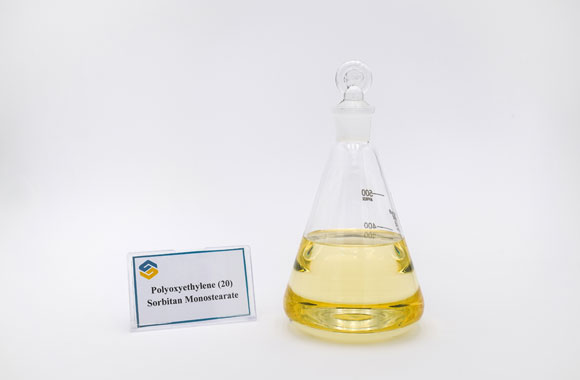
Polysorbate 60 is an oily thick liquid or a semi-solid with yellowish or amber color. It has a distinctive odor and slight bitter taste. Polysorbate 60 is a nonionic surfactant that is commonly used in food, personal care, pharmaceutical, industrial and more. There are two ways to synthesize polysorbate 60. The most common way is to go through base catalysis, where diesters, triglyceride and other by-products are produced in the reaction, resulting in dark color and unstable quality product. This type of polysorbate can only be used for petroleum, cleanser, textile and other industrial productions. Another way of synthesis is carried out by etherification and esterification; when etherification is performed prior to esterification, the product appears to be dark colored with high diesters and triglyceride contents and low stability. Whereas when esterification is performed before etherification, the product has lighter color, higher monoester yield and higher stability.
Polysorbate 60 is commonly used as an emulsifier, a stabilizer and a dispersant in food formulations, which shows various polysorbate 60 uses. For example, it acts as an emulsifier in cream, vegetable oils, pastries, candies, instant coffee and drinks; in fermented bread formulations it acts as a conditioning agent, an emulsifier and an enhancer; and in semi-liquid drinks it acts a wetting agent.
Polysorbate 60 also acts as a wetting agent in a wide variety of personal care products, such as toothpaste, hair dye paste, lotion and sunscreen.
In industrial product formulations like metal working fluid polysorbate 60 can function as a wetting agent, a dispersant, an emulsifier, an antifoaming agent.